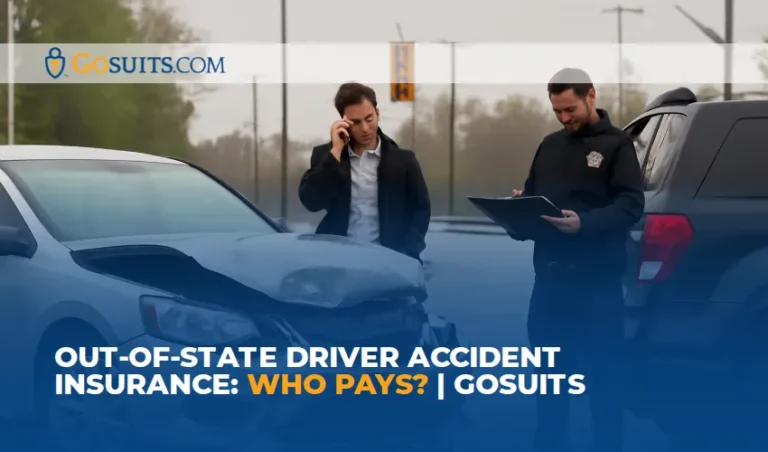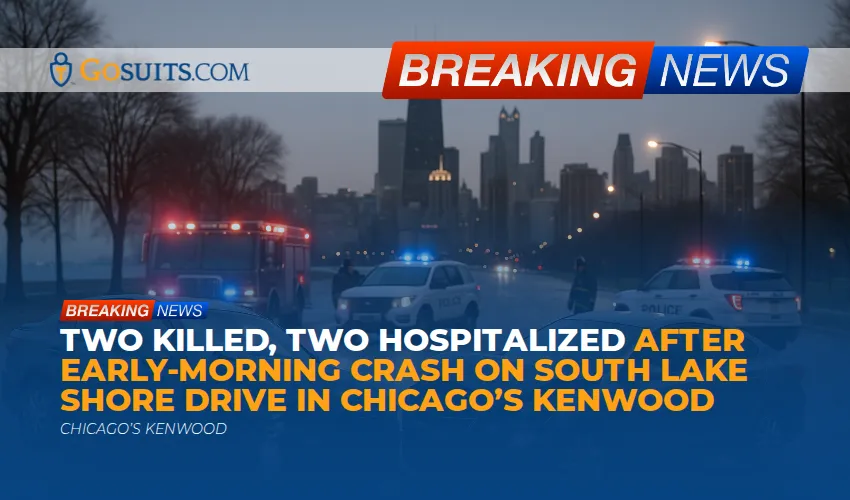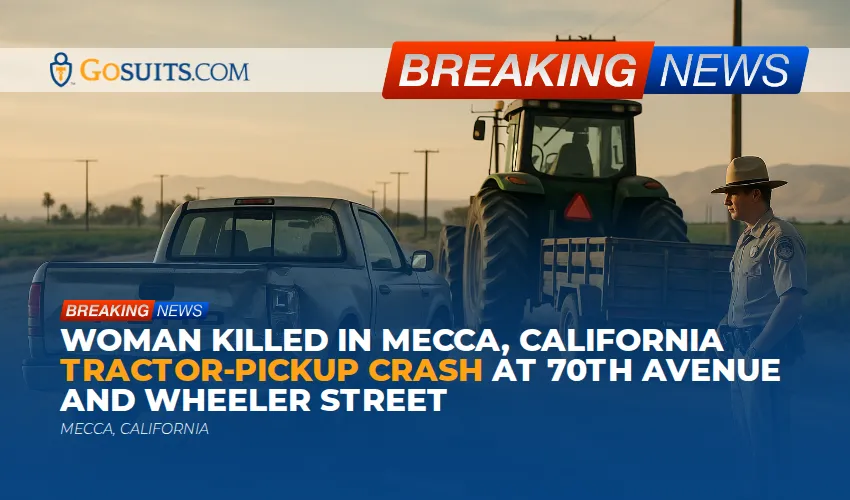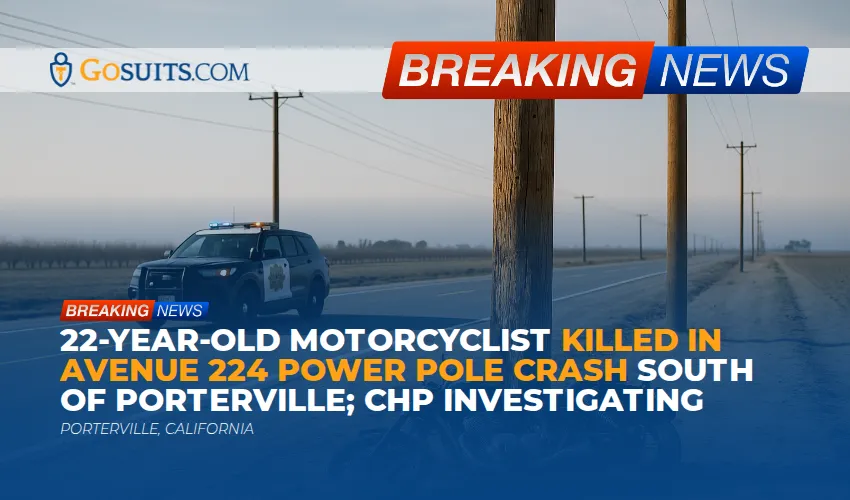- After an out-of-state car crash, who pays first?
- Does your auto insurance follow you across state lines?
- Which courts have jurisdiction over an out-of-state driver?
- Which state’s law applies to liability and insurance issues?
- What are the minimum liability coverage limits in TX, CA, and IL?
- How do PIP and MedPay work when the crash happens out of state?
- How does UM/UIM coverage apply to interstate crashes?
- How does comparative negligence change your recovery in TX, CA, and IL?
- What are the statute of limitations deadlines for out-of-state accident claims?
- How do you serve and sue an out-of-state driver or company?
- Can an interstate crash land in federal court, and what does that mean?
- What if the wreck happened in a no-fault state?
- How do subrogation and health insurance liens affect your settlement?
- What immediate steps help protect your multi-state claim?
- Do commercial trucks, rentals, or rideshares change who pays?
- How do insurers evaluate and negotiate cross-state claims?
- Where can you get crash reports and records in TX, CA, and IL?
- What are common pitfalls for plaintiffs and defendants in interstate claims?
- How GoSuits helps with out-of-state driver accident insurance disputes
- Resources and citations
After an out-of-state car crash, who pays first?
When an out-of-state driver hits you, who pays depends on fault, your coverages, and where the collision happened. In most at-fault states like Texas, California, and Illinois, the at-fault driver’s liability insurance pays for the other party’s losses up to policy limits. If the at-fault driver is uninsured or underinsured, your uninsured or underinsured motorist (UM/UIM) coverage can apply. Your optional personal injury protection (PIP) or medical payments (MedPay) can pay early medical bills regardless of fault, depending on the policy and state. Health insurance often pays secondary and may later seek reimbursement.
Serious crashes are common, including those involving nonresidents. Nationwide, 2023 traffic deaths were preliminarily estimated at 40,990, a slight decrease from 2022 but still far above pre-2020 levels, according to the National Highway Traffic Safety Administration (NHTSA). Texas, California, and Illinois remain among the states with the highest counts of fatalities and injury crashes each year (NHTSA State Traffic Safety Information).
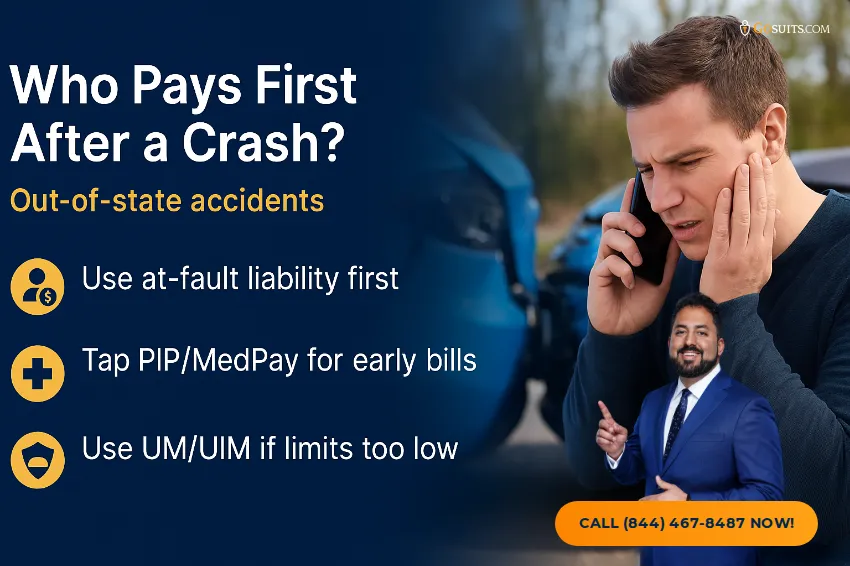
Does your auto insurance follow you across state lines? Will your policy automatically adjust to the other state’s minimums?
Most personal auto policies include an “out-of-state coverage” or “broadening” clause. If you drive into another state with higher minimum liability requirements, your policy generally increases to meet those minimums for that trip. For example, the Texas Department of Insurance explains that Texas policies provide coverage in other states and will meet those states’ minimum liability limits if higher than Texas (TDI Auto Insurance Guide). The California Department of Insurance offers similar guidance for coverage basics when driving out of state (California DOI Auto 101). Illinois Department of Insurance consumer materials likewise emphasize mandatory liability and UM coverage that travels with you (Illinois DOI Auto Insurance).
Does the location of the crash change who pays?
Yes. The state where the crash occurs usually controls liability and damages rules. If you are a Houston driver struck in Los Angeles, California negligence and damages law typically governs the tort claim, even though your policy was issued in Texas. Your insurer still owes duties under your contract, but the tort rules and minimum required limits are typically set by the crash state’s law, subject to choice-of-law analysis described below.
Can you sue an out-of-state driver in the state where the crash happened?
Almost always, yes. A driver who causes a wreck in a state has sufficient “minimum contacts” with that state to be sued there, consistent with due process (International Shoe Co. v. Washington; World-Wide Volkswagen v. Woodson). States also have statutes to facilitate service of process on nonresident motorists, allowing you to start a lawsuit even if the defendant leaves the state.
What nonresident motorist statutes apply in TX, CA, and IL?
- Texas: Service on nonresident motorists is governed by the Texas long-arm statute for motor vehicle accidents, Tex. Civ. Prac. & Rem. Code § 17.062.
- California: California permits service through the DMV for nonresident drivers, Cal. Veh. Code § 17451.
- Illinois: Illinois’ nonresident motorist service provision appears at 625 ILCS 5/10-301.
Can you sue in your home state instead?
Sometimes. If the out-of-state driver has sufficient contacts with your home state, you can sue there. If the only contact is the crash in another state, courts may lack personal jurisdiction in your home state. Recent cases also emphasize that the claim must arise out of the defendant’s forum contacts (Bristol-Myers Squibb Co. v. Superior Court).
Which state’s law applies to liability and insurance issues?
- California: Uses governmental interest analysis. When states’ laws conflict, California courts compare the interests of each state to determine which law should apply, often favoring the state where the injury occurred (Reich v. Purcell). See also Offshore Rental Co. v. Continental Oil Co..
- Texas: Follows the Restatement (Second) “most significant relationship” test, looking at contacts like the place of injury, conduct, and parties’ domiciles (Gutierrez v. Collins).
- Illinois: Also applies a most significant relationship test considering similar factors (Ingersoll v. Klein; Townsend v. Sears).
In practice, if a Dallas resident is injured in San Diego by a Chicago driver, California tort law often governs liability and damages because California is the place of injury and conduct.
What about the insurance contract law?
Insurance policy interpretation can be governed by the state where the policy was issued or by a choice-of-law clause in the policy, subject to forum rules. Tort and contract issues can be governed by different states in the same case.
What are the minimum liability coverage limits in TX, CA, and IL?
- Texas: Minimum 30/60/25 for bodily injury and property damage liability (Tex. Transp. Code § 601.072).
- California: Minimum increased to 30/60/15 for policies issued or renewed on or after Jan. 1, 2025 (Cal. Ins. Code § 11580.1 as amended by SB 1107).
- Illinois: Minimum 25/50/20 for liability (625 ILCS 5/7-203).
If an at-fault nonresident has lower limits from their home state, most policies still expand to the higher minimum for the state where the crash occurs, as discussed by the Texas Department of Insurance (TDI).
How do PIP and MedPay work when the crash happens out of state?
- Texas: Insurers must offer PIP of at least $2,500 unless rejected in writing (Tex. Ins. Code § 1952.151 et seq.).
- California: No PIP. MedPay is optional. California is a fault state.
- Illinois: No PIP requirement. MedPay is optional. Illinois is a fault state.
Will your PIP or MedPay pay if you crash in another state?
Often yes, if your policy provides it. PIP or MedPay typically follows you and your household members when occupying a covered vehicle or, in some policies, as a pedestrian. Read your policy for territorial limits and definitions. Texas PIP is payable regardless of fault within policy terms (Texas Insurance Code).
How does UM/UIM coverage apply to interstate crashes?
- Texas: UM/UIM must be offered and applies unless rejected in writing (Tex. Ins. Code § 1952.101).
- California: UM/UIM is mandatory unless rejected in writing (Cal. Ins. Code § 11580.2).
- Illinois: UM is mandatory at minimum limits; UIM is also required in many policies above minimums (215 ILCS 5/143a).
UM/UIM generally applies when an at-fault driver lacks enough insurance or flees the scene, even if the collision occurs in another state, subject to policy terms and notice requirements.
How does comparative negligence change your recovery in TX, CA, and IL? What if both drivers share fault?
- California: Pure comparative fault. Your damages are reduced by your percentage of fault, even if you are mostly at fault (Li v. Yellow Cab).
- Texas: 51 percent bar. You recover only if your fault is 50 percent or less; damages are reduced by your percentage (Tex. Civ. Prac. & Rem. Code § 33.001).
- Illinois: 51 percent bar. You recover if you are not more than 50 percent at fault; damages reduced by your percentage (735 ILCS 5/2-1116).
Do joint and several liability rules differ?
- California: Defendants are jointly liable for economic damages and severally liable for noneconomic damages (Cal. Civ. Code § 1431.2).
- Texas: Joint and several liability is limited to certain conditions, including a defendant 50 percent or more at fault (Tex. Civ. Prac. & Rem. Code § 33.013).
- Illinois: Joint and several liability applies to medical expenses; otherwise several liability applies with exceptions (735 ILCS 5/2-1117).
What are the statute of limitations deadlines for out-of-state accident claims?
- California: 2 years for personal injury (Cal. Code Civ. Proc. § 335.1); 3 years for property damage (§ 338).
- Texas: 2 years for personal injury and property damage (Tex. Civ. Prac. & Rem. Code § 16.003).
- Illinois: 2 years for personal injury (735 ILCS 5/13-202); 5 years for property damage (§ 13-205).
Choice-of-law rules can affect which deadline applies, so do not wait. If a government entity is a potential defendant, special notice rules may apply in each state.
How do you serve and sue an out-of-state driver or company?
File the lawsuit in a proper court, then serve process under the forum state’s rules. In cross-border crashes, plaintiffs often use nonresident motorist statutes to serve through a state officer such as a secretary of state or DMV. Courts then require notice by mail to the defendant’s last known address. Details vary by state statutes referenced above. Businesses can be served by serving their registered agent, or via long-arm statutes if they transact business related to the claim in the forum.
Can an interstate crash land in federal court, and what does that mean?
If the parties are citizens of different states and the amount in controversy exceeds $75,000, a defendant may remove a case from state court to federal court, or a plaintiff may file in federal court, under 28 U.S.C. § 1332. Removal is governed by 28 U.S.C. § 1441. Venue rules appear in 28 U.S.C. § 1391. Federal courts apply the substantive law of the forum state to tort claims under Erie principles, so state negligence law still drives liability and damages.

What if the wreck happened in a no-fault state? Does PIP come first in no-fault jurisdictions?
In no-fault systems, your own PIP pays initial medical expenses and lost wages regardless of fault, and your right to sue for pain and suffering may be limited unless you meet a threshold. Cornell Law School’s legal encyclopedia summarizes the concept of no-fault automobile insurance systems (LII Wex: No-fault auto insurance). If you live in Texas, California, or Illinois and are hurt in a no-fault state, your rights will depend on that state’s no-fault statute, your own policy’s PIP and UM/UIM, and any thresholds in the crash state.
How do subrogation and health insurance liens affect your settlement?
When your insurer pays your bills, it often gains a right to be repaid from your settlement with the at-fault party. That right is called subrogation (Law.com Dictionary). Health plans, Medicare, and Medicaid may also have reimbursement claims that must be resolved. Negotiating these claims can significantly affect your net recovery.
What immediate steps help protect your multi-state claim?
- Call 911 and get medical care: Prompt documentation helps your health and your claim.
- Call police and obtain a report: Each state has procedures for crash reports and later access, linked below for TX, CA, and IL.
- Collect evidence: Photos, videos, witness info, and the other driver’s insurance and license details.
- Notify your insurer quickly: Policies require prompt notice for liability, PIP, MedPay, and UM/UIM.
- Avoid recorded statements to the other insurer without guidance: Statements can be used to dispute fault or injuries.
- Track all expenses and missed work: Save bills, EOBs, wage statements, and repair estimates.

Do commercial trucks, rentals, or rideshares change who pays?
How do commercial or interstate trucking claims differ?
Crashes with 18-wheelers and interstate carriers add federal and state regulations, complex insurance layers, and multiple defendants. Discovery often involves driver logs, electronic control module data, fleet safety rules, and motor carrier insurance filings. Federal safety oversight and litigation resources are available through the U.S. courts and Department of Transportation, but the core injury claim is governed by state negligence law.
What about rental cars?
Rental companies typically provide state-minimum liability coverage, but your own policy may be primary or secondary. Contract and coverage issues often cross state lines, especially when the renter’s policy is issued in Texas or Illinois and the crash occurs in California or elsewhere.
How do rideshare claims work?
Rideshare platforms maintain layered liability coverage that depends on whether the app is on and whether a ride is in progress. These policies generally apply across states, but the governing tort law is typically the law of the crash state.
How do insurers evaluate and negotiate cross-state claims?
What factors drive settlement value?
- Fault allocation: Percentage of fault under the crash state’s comparative negligence rule.
- Injury proof: Contemporaneous medical records, causation opinions, and documented treatment.
- Policy limits: Liability, UM/UIM, and umbrella limits, including out-of-state minimum expansions.
- Venue: Jury verdict trends in cities like Houston, Dallas, Los Angeles, San Diego, Chicago, and surrounding counties.
- Damages law: Caps, joint and several rules, and recoverable categories of damages.
- Deadlines and notice: Statutes of limitations and policy notice provisions.
Where can you get crash reports and records in TX, CA, and IL?
- Texas: Order crash reports through TxDOT’s Crash Records system (TxDOT Crash Reports).
- California: California Highway Patrol provides collision report instructions and locations (CHP Collision Reports).
- Illinois: Illinois State Police portal for requesting traffic crash reports (ISP Crash Reports).
What are common pitfalls for plaintiffs and defendants in interstate claims?
- Missing the correct deadline: Applying the wrong state’s limitation period can end a claim.
- Assuming your policy limits control: The crash state’s minimums and rules may govern.
- Overlooking UM/UIM: Many cross-border wrecks involve underinsured drivers. UM/UIM can be decisive.
- Incomplete documentation: Gaps in treatment or missing records reduce case value.
- Recorded statements: Admissions can harm fault and injury disputes.
For drivers accused of fault, what should be considered?
- Tender to all carriers: Personal, employer, and umbrella carriers may all have duties to defend and indemnify.
- Venue and removal: Diversity removal may be available in multi-state disputes under 28 U.S.C. § 1441.
- Preserve evidence: Vehicle data and telematics are often critical in interstate collisions.
- Choice-of-law analysis: Damages exposure can change with the governing law.
How GoSuits helps with out-of-state driver accident insurance disputes
When an out-of-state driver hits you, you may be dealing with unfamiliar laws, multiple insurers, and strict deadlines. A focused consultation helps you understand fault, coverage layers, which court makes sense, and how to preserve evidence across states. We walk through PIP or MedPay options, UM/UIM triggers, subrogation, and timelines in Texas, California, and Illinois. You get practical next steps without pressure.

Who we are and how we add value
- Availability and communication: We are available 24/7 with an immediate free consultation. Our team includes multilingual support, with Spanish and Farsi available at all times. You receive regular updates and direct access to your team so you are not left guessing about your case status.
- Fee policies and transparency: We offer No win, No Attorney Fees. Learn more: No win, No Attorney Fees. There are no hidden administrative fees. Costs are explained before decisions are made.
- Tools and workflow built for speed and accuracy: We use a proprietary personal injury software platform built for our firm. It helps us investigate, organize medical records, prepare comprehensive demands, negotiate with multiple carriers, and, when needed, file and conduct discovery efficiently. We are a law firm that uses technology to stay ahead of insurance company tactics.
- Experience and litigation record: We bring 30 years of combined experience to interstate accident claims and have litigated more than 1,000 cases, with published settlement and verdict results on our site (past cases). In product liability, 18-wheeler, brain and spinal injury, and other complex matters, we retain qualified, court-approved professional witnesses within the state to establish liability and causation. We handle severe injury and complex litigation in Texas, California, and Illinois.
- Awards and recognition: Recognized for Top 100 Settlement in Texas, listed in Best Lawyers 2023, 2024, and 2025, and selected to Super Lawyers since 2021. According to TopVerdict, our results include number one settlements and verdicts across multiple U.S. counties. Sean Chalaki was named to National Trial Lawyers Top 40 Under 40.
- Community involvement: We are active with schools, local chambers of commerce, and nonprofit foundations, and serve on boards of trial lawyer organizations, including the Texas Trial Lawyers Association, as well as consumer protection groups.
- Not a volume practice: We limit caseload so your matter receives attention. Each case plan is tailored to venue, insurance structure, and the governing law, whether your wreck was in Houston, Dallas, Austin, San Antonio, Los Angeles, San Diego, San Jose, San Francisco, Sacramento, Chicago, Naperville, or Springfield.
- Immediate steps we can take: We can secure crash reports, preserve video and vehicle data, contact insurers, set up PIP or MedPay if available, evaluate UM/UIM, and coordinate medical documentation within days. For cross-state claims, we assess jurisdiction, removal risk, and the best forum for filing.
Where we are and how to reach us
GoSuits serves clients statewide in Texas, California, and Illinois. We have attorneys and staff available at all of our locations, ready to help 24/7. If your crash happened in or near Houston, Dallas, Austin, San Antonio, Los Angeles, San Diego, San Jose, San Francisco, Sacramento, Chicago, Naperville, or Springfield, our team can begin work immediately.
What to expect in your case
- Early claim setup: We identify all coverage layers, including out-of-state minimum adjustments, rental or commercial policies, and UM/UIM.
- Evidence plan: We map needed records, from roadway cameras and telematics to medical and employment files, and send preservation notices.
- Demand strategy: We prepare a state-specific demand that applies the correct comparative fault, damages rules, and lien resolution plan.
- Litigation-ready: If a settlement is not fair, we file in the venue that best fits jurisdiction and choice-of-law, and prosecute the case through discovery and trial.
Out-of-state car accident insurance disputes are fact-intensive and time-sensitive. Having a team that knows the differences among Texas, California, and Illinois rules can help move your claim forward with clarity and purpose.
Resources and citations
- NHTSA: 2023 Traffic Fatalities Estimates
- NHTSA: State Traffic Safety Information
- Texas Transportation Code § 601.072 (Minimum Liability Limits)
- California Insurance Code § 11580.1 (Auto Liability Requirements)
- 625 ILCS 5/7-203 (Illinois Minimum Liability)
- Texas Insurance Code § 1952.151 et seq. (PIP)
- Texas Insurance Code § 1952.101 (UM/UIM)
- California Insurance Code § 11580.2 (UM/UIM)
- 215 ILCS 5/143a (UM/UIM)
- Tex. Civ. Prac. & Rem. Code § 33.001 (Comparative Responsibility)
- 735 ILCS 5/2-1116 (Comparative Negligence)
- Cal. Code Civ. Proc. § 335.1 (2-year PI Limit)
- Cal. Code Civ. Proc. § 338 (Property Damage Limit)
- Tex. Civ. Prac. & Rem. Code § 16.003 (2-year Limit)
- 735 ILCS 5/13-202 (PI Limit)
- 735 ILCS 5/13-205 (Property Damage Limit)
- Tex. Civ. Prac. & Rem. Code § 17.062 (Service on Nonresident Motorists)
- Cal. Veh. Code § 17451 (Service via DMV)
- 625 ILCS 5/10-301 (Nonresident Motorist Service)
- International Shoe Co. v. Washington
- World-Wide Volkswagen v. Woodson
- Bristol-Myers Squibb Co. v. Superior Court
- Reich v. Purcell
- Offshore Rental Co. v. Continental Oil Co.
- Gutierrez v. Collins
- Ingersoll v. Klein
- Townsend v. Sears
- Li v. Yellow Cab
- Cal. Civ. Code § 1431.2 (Prop 51)
- 28 U.S.C. § 1332 (Diversity Jurisdiction)
- 28 U.S.C. § 1441 (Removal)
- 28 U.S.C. § 1391 (Venue)
- Texas Department of Insurance: Auto Insurance Guide
- Illinois Department of Insurance: Auto Insurance
- California Department of Insurance: Auto 101
- Law.com Dictionary: Subrogation
- California Highway Patrol: Collision Reports
- TxDOT: Crash Reports
- Illinois State Police: Crash Reports
- LII Wex: No-fault Auto Insurance
